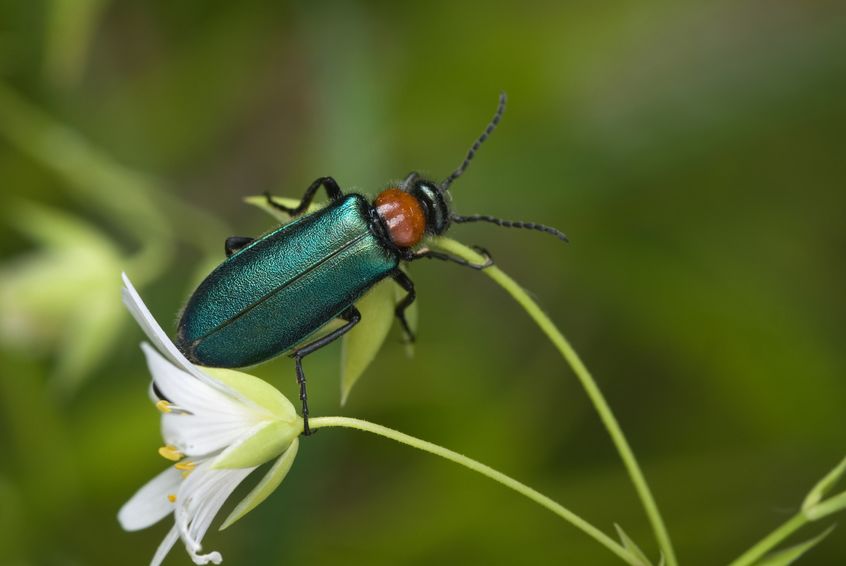It can be assumed that most people do not associate bugs with sexual virility, but at some point during human history, and for reasons that are still not understood, humans started consuming certain insects for their supposed aphrodisiac effects. While this practice may seem absurd today, insect-based aphrodisiac products are still widely consumed by people hoping to enhance their sexual vigor. The most well known of these products is Spanish fly, which, despite its enduring popularity, has been proven to be more harmful than therapeutic when consumed by humans.
The name “Spanish fly” is a misnomer, as the product contains chemicals secreted by beetles, not flies. A chemical called cantharidin is the main ingredient in Spanish fly, and it is this chemical that is supposedly responsible for the product’s purported aphrodisiac effects. Cantharidin is a crystalline substance that is secreted almost exclusively by a group of beetles commonly referred to as blister beetles. Blister beetles belong to the meloid family of beetles, and they exist all over the world. Although cantharidin can be attained in most regions of the world, the substance is most often sourced from the Lytta vesicatoria species of meloid beetle. As you can probably guess, this species is commonly found in Spain.
Over the course of Spanish fly’s long history, it was used to treat a variety of medical conditions. The Greek physician Hippocrates advised patients suffering from edema related heart disease to consume blister beetles after removing the insect’s wings, feet and head, as the insect’s secretions were believed to be medically valuable. Many other historically notable doctors, including Galen, recommended cantharidin for treating abscesses, poor eyesight, coughs, ulcers, hypochondria, torpor, diarrhea, nausea and mania. By 1810, chemists succeeded in isolating cantharidin, and by this point, the substance had been known to cause numerous medical issues.
It had long been known that cantharidin was a blistering agent, as the eggs of meloid beetles develop blisters after being exposed to the secretion. However, the substance is now known to be highly toxic, and it can cause many unpleasant health effects when consumed. These effects include erosion and bleeding of mucous membranes, severe intestinal bleeding, multiple organ failure, and eventual death. Despite these negative effects, Spanish fly continues to be used for culinary purposes and, most notably, as an aphrodisiac. Modern Spanish fly concoctions include relatively small amounts of cantharidin, if any at all, but pure cantharidin can still be attained through the black market, and poisonings still occur.
Have you ever known someone who consumed Spanish fly?

